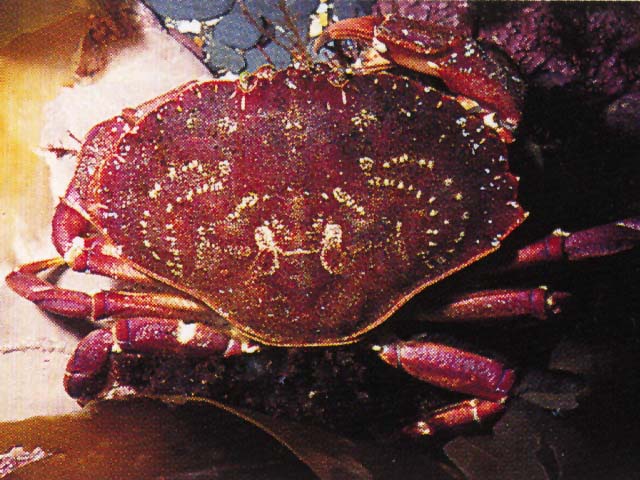| Cancridae (rock crabs) |
| 8.9 cm CW (female); max.weight: 31.0 g |
|
benthic; marine; depth range 0 - 575 m |
| Western Atlantic. |
|
Carapace approximately 2/3 long as wide, convex, granulated; front with 3 teeth, middle one exceeding others and depressed (flattened dorsoventrally); anterolateral margins (excluding inner orbital angles) divided into 9 lobes or teeth with edges granulate; notches between teeth continued on carapace as short, closed fissures giving teeth a pentagonal character. Pincers moderate-sized, shorter than second legs, ridges granulated carpus with sharp inner dorsal spine. Color: yellowish, closely dotted with dark purplish brown, becoming reddish brown after death. |
| Minimum depth from Ref. 97531. Occurs at depths ranging from the low-water mark to 575 m. Basically a cold water species. Small to medium-sized crabs move into shallower depths especially in winter, whereas larger ones occur in deeper waters (Ref. 367). Found on molluscan and other shells (Ref. 97531). Feeds mainly on mollusks, echinoderms, and other invertebrates (Ref. 367). |
|
Not Evaluated (N.E.) Ref. 123251)
|
|
|
Source and more info: www.sealifebase.org. For personal, classroom, and other internal use only. Not for publication.

